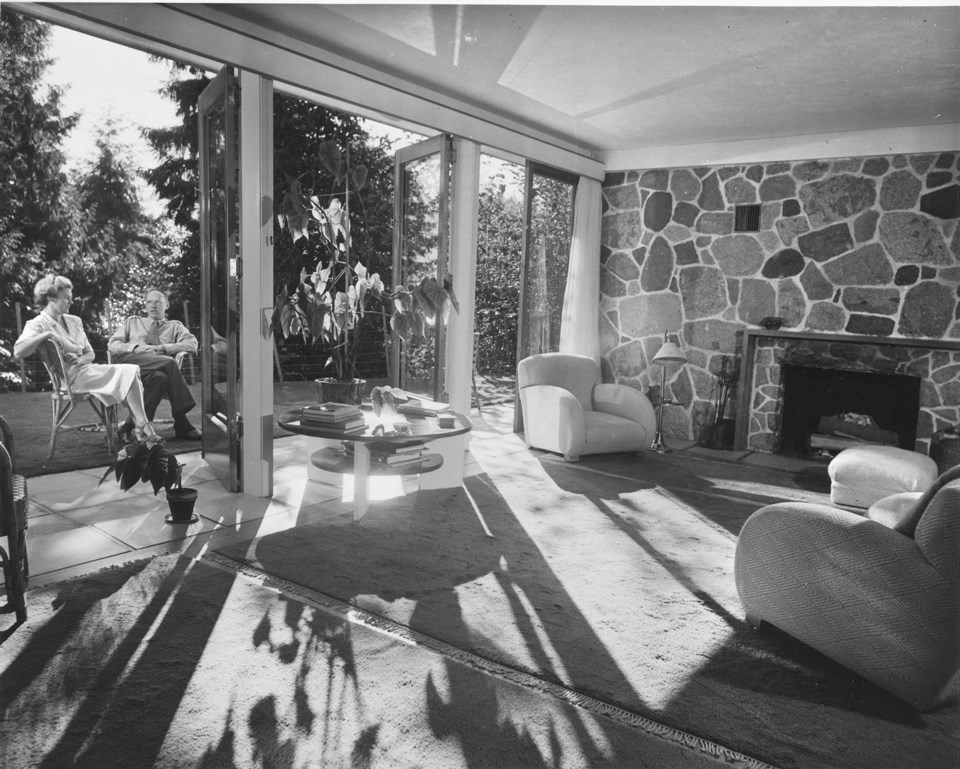When describing a house as a heritage building the thoughts of gable roofs, wood brackets and mullioned windows might come to mind but here on the North Shore it's a little different than you'd think.
It's important to consider what truly defines our architectural heritage and what buildings are worth preserving and why. Modern architecture is still perceived as a new and contemporary movement even though its beginnings are almost a century old.
This is a particularly pertinent topic at the moment with the proposed sale of the Binning House in West Vancouver. The one-storey home was groundbreaking in its day and is a touchstone work for both the Canadian modern movement and the modern movement as a whole.
The modern esthetic began with the evolution of the International Style in Europe after the First World War. The stylistic aspiration was to reach beyond historicism and reflect a new way of thinking and a new way of doing things. The social order had changed and industrialization had taken hold. Ornamentation was rejected, architectural form was simplified and materials like glass, concrete and steel were embraced for the new building palette.
These avant-garde ideas saw form in West Vancouver when Bertram Charles (BC) Binning, a local artist and teacher who championed the new movement, commissioned architects Robert Berwick and Ned Pratt to help him design and build his new home. The outcome was arguably the first truly modern home built on the North Shore with a flat roof, large windows and open plan. Looking at the house today one will be struck by its simple form and clean line but might overlook the fact that this modest home was ground-breaking in its day.
BC Binning passed away in 1976 and his widow Jessie remained in the home until her death in 2007. In her will Jessie Binning bequeathed the home to trustees that would ensure the house and its furnishings would be maintained for historical purposes and architectural learning.
The Land Conservancy of B.C. was gifted the property for its heritage protection but in recent months has found itself in financial difficulties that have forced into creditor protection. A prominent Lower Mainland developer, who is reported to be a collector of BC Binning's work, recently approached the TLC with an offer to purchase the home for $1.6 million, an amount over its 2013 assessed value of $1,519,900 (BC Assessment) and an amount that would see the beleaguered non-profit out of their financial trouble. The Land Conservancy wants to proceed with the sale.
The Binning Residence is a National Historic Site and a Municipal Heritage Site and has covenants protecting it but detractors of the potential sale fear that if the home moves into private hands the public will lose access to it and the spirit of Jessie Binning's donation will be violated. On Monday, Nov. 18 a B.C. Supreme Court judge was to rule if the sale could be legally made. The judge deferred the review and decision on the proposed sale to mid-December.
From my point of view the ruling will set an important precedent on what architectural heritage protection looks like moving into the future.
If the sale is allowed to move ahead without guaranteeing a continued public connection to the home, something will be lost. It's like an important piece of artwork being purchased by a private buyer. If the purchaser gifts it to a gallery or museum for public viewing and study, everyone's a winner but if the piece gets tucked away into a private collection with only limited access, we all lose.
The Binning home was bequeathed in trust to be used as a historical architectural resource for the community. If the sale moves forward and the Binning home becomes a private possession (regardless of the best intentions of the buyer to maintain it) then the spirit of Jessie Binning's gift will be lost.
Kevin Vallely is a residential designer in North Vancouver. Follow along Kevin's "small house" design at cliffhangerhouse.com.



